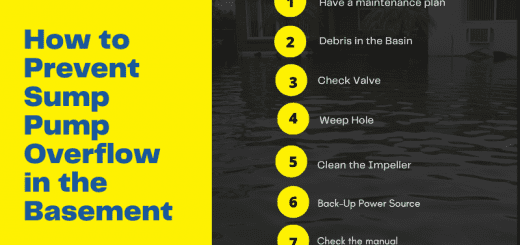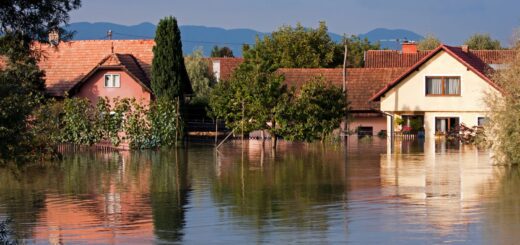5 Ways To Prevent Water Damage In The Fall
Water damage can be an issue in your home during any time of the year. All it takes is for a little bit of water to leak into the home to result in damage as it will spread easily through porousPorous describes a material that contains small openings or ... More building materials and furnishings. As the water spreads, it will stain and weaken the materials it affects which can permanently damage certain materials and even leadLead is a heavy metal that can be toxic to humans, especiall... More to structural damage. MoldMold is a type of fungus that grows in damp or humid conditi... More growth is also a common result of water damage as moldMold is a type of fungus that grows in damp or humid conditi... More colonies thrive in environments with excess water.
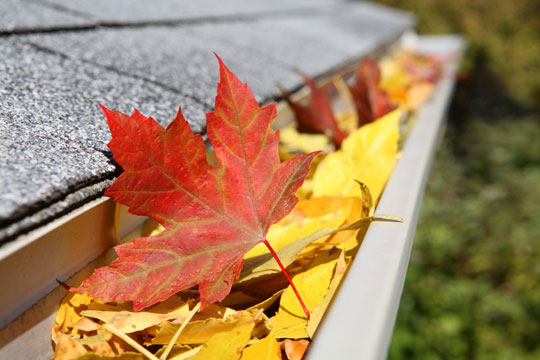
In the fall season, there are several ways that water damage can become a problem if you do not do the proper maintenanceMaintenance is the routine care, inspection, and repair of a... More to prepare for the change in seasons. Taking the time to handle some maintenanceMaintenance is the routine care, inspection, and repair of a... More tasks inside and outside your home during the fall will not only prevent water damage issues for the rest of the fall season, but also help protect your home from water through the winter. In this guide, we discuss the importance of water damage preventionPrevention refers to actions taken to reduce the likelihood ... More in the fall as well as five maintenanceMaintenance is the routine care, inspection, and repair of a... More tips you can do to help prevent water damage through the fall and winter seasons.
Why Fall is a Critical Time for Water Damage Prevention
The fall is an important time to focus on water damage preventionPrevention refers to actions taken to reduce the likelihood ... More because it can be a wet season and it is your last chance to ensure that your home is protected against water damage before the winter arrives. While water damage can happen at any time due to a number of factors, there are several potential causes of water damage that are more likely to be a problem during the fall season.
The fall conditions that are most likely to leadLead is a heavy metal that can be toxic to humans, especiall... More to water damage include the drop in temperatures and the falling leaves. The colder temperatures in the fall can start to freeze the ground which makes it more difficult to absorb rainwater, causing it to pool and flood outdoor areas. If the water is not properly drained from the yard or absorbed into the ground, it can reach the foundation of your home and cause indoor leaks or floodingFlooding is the overflow or accumulation of water in areas t... More. The falling leaves can also contribute to water damage by clogging the gutters and preventing rainwater from being properly drained. The water may flow over the side of the gutters and collect near the foundation.
Before the end of the fall season and start of the frigid winter conditions, it is important to take care of the following home maintenanceMaintenance is the routine care, inspection, and repair of a... More tips to help protect your home from water damage during the fall and winter.
Gutter Maintenance
The gutters are an important feature of your home as they allow water from rain, snow, and ice to drain properly from the roof and get deposited a safe distance from the foundation. During the fall season, you need to clean and maintain your gutters regularly as the falling leaves can clog the gutters or downspouts. A clog in either the gutters or downspouts will cause the water to gather around the foundation of your home, increasing the risk of seepageSeepage is the slow movement of water or other fluids throug... More and indoor water damage.
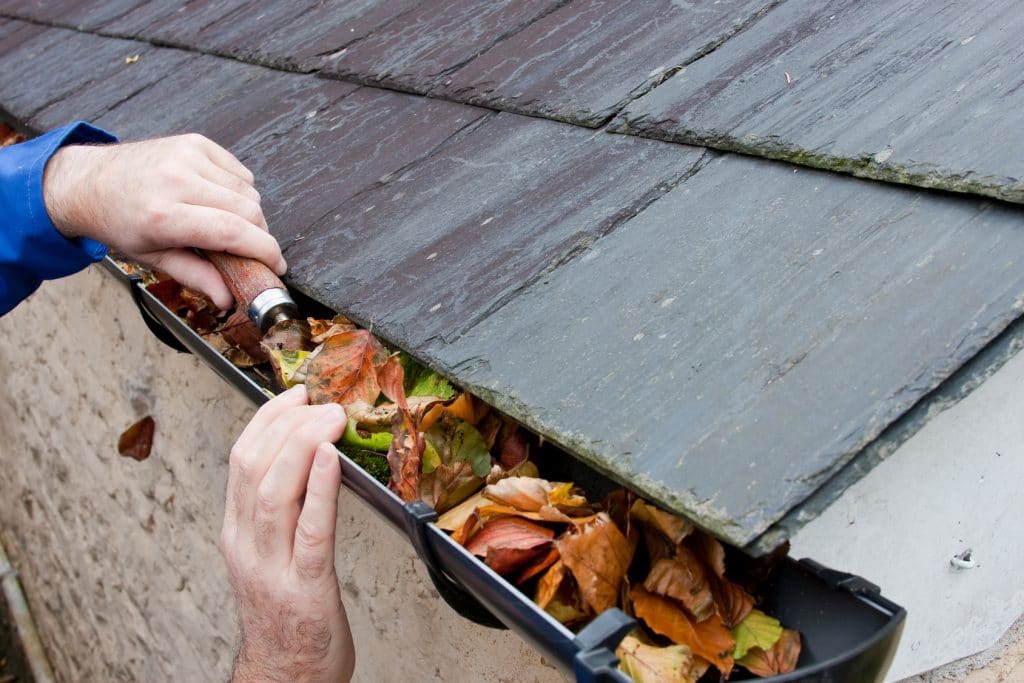
Remove leaves and debris from your gutter to prepare your yard for fall.
The following tips will help you maintain your gutters:
- Regular cleaning: You should routinely clean the debris from your gutters during the spring and summer, but this is especially important in the fall as fallen leaves can clog the gutters. You should check and clean the gutters more regularly during the fall to ensure that the gutters and downspouts are free of leaves and other debris.
- Check for damage: The fall is the best time to ensure that your gutters and downspouts are in good repairRepair is the act of fixing or restoring damaged property, m... More to handle the weight of the snow and ice in the winter. Check for any damage to the gutter system and have damaged gutters or downspouts repaired or replaced immediately.
- Check the downspouts: The downspouts deposit the drained water at a safe distance from the foundation of the home. You should check for clogs or damage to the downspouts and address these issues right away. If the downspouts are not long enough, replace them with longer downspouts that will drain the water at a safe distance.
You should check and clean your gutters and downspouts routinely during the fall, especially if there are a lot of leaves falling in your yard. You can do one final cleaning once all the leaves have fallen to ensure that the gutters are clear and in good repairRepair is the act of fixing or restoring damaged property, m... More. Regular cleaning and maintenanceMaintenance is the routine care, inspection, and repair of a... More of your gutters will help ensure proper drainage which prevents foundation water damage as well as ice dams in the winter.
Roof Inspection and Repair
The roof is a potential source of water damage as damage to the shingles, flashing, and other components can allow water to infiltrate the home. During the spring and summer, the roof is exposed to wind, sunlight, debris such as tree branches, and even wildlife that can cause damage or wear and tear to the roof. If the damage is not addressed, water can leak into the home and damage insulationInsulation is a material used in buildings to reduce the tra... More and structural materials like wood and drywall.
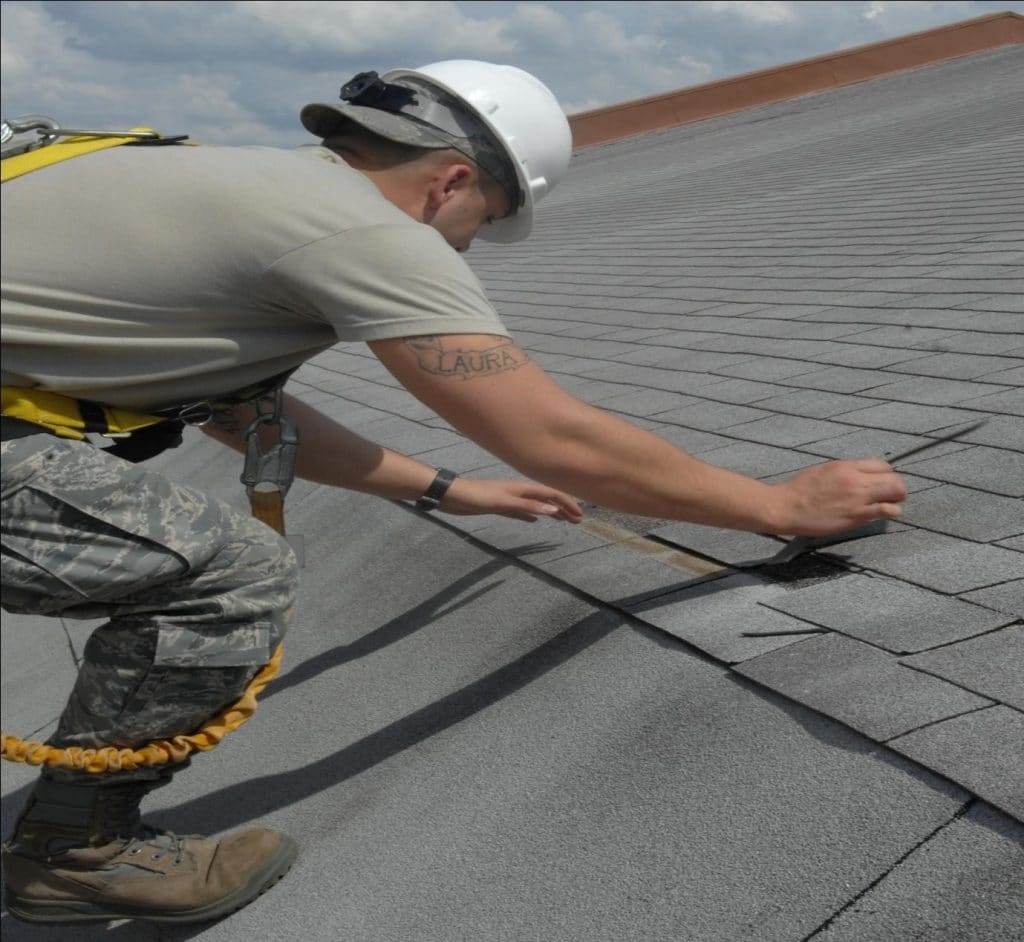
The fall is a great time to inspect your roof for any damage that may have occurred during the summer and address the damage you find before the winter. Winter weather that brings ice and snow can make roof damage worse and result in costly repairs.
You can follow these steps to inspect your roof during the fall:
- TrimTrim is the decorative or functional molding used to finish ... More overhanging tree branches: Falling tree branches can cause significant damage to your roof. Trees with branches that hang over your roof should be trimmed in the fall to help prevent this type of damage. Tree pruning can be a hazardous job without the right training and equipment which makes it a good idea to call a professional.
- Check your attic: You can help protect your roof from potential problems by checking your attic. Make sure the vents in the eaves and ridge are open and free of debris. These vents allow air to escape the attic which helps prevent ice dams in the winter. You should also check for intrusive animals as they can cause damage to the roof that can allow for the infiltrationInfiltration is the process by which water, air, or other su... More of water.
- Check the flashing: Roof flashing is the material used to seal spaces around the joints and features of the roof to prevent water from leaking into the home. Flashing is typically made of thin metals that can become corroded or damaged over time. Check the flashing to ensure that it is in place and in good condition. Any gaps or separation of the flashing from the roof must be repaired to ensure protection from water damage. It is best to call a roofing professional to repairRepair is the act of fixing or restoring damaged property, m... More damage to the flashing.
- Replace damaged or worn-out shingles: Asphalt shingles can become worn out or damaged over time which affects their ability to protect your home from water. Check the shingles on your roof and look for shingles that are warped, curled, broken, loose, or missing. Damaged or missing shingles should be replaced immediately.
- Hire a roofing professional: If you think there may be a problem with your roof, call a roofing professional to do an inspectionInspection is the careful examination and assessment of a pr... More. They will identify problems you may miss and can provide professional repairs.
Landscape and Yard Maintenance
You can help reduce the risk of water damage during the fall and winter with proper landscaping and yard maintenance. It is important to keep your yard free of leaves and other debris that can trap water and moisture and ensure that the grading of the landscape allows for proper drainage.
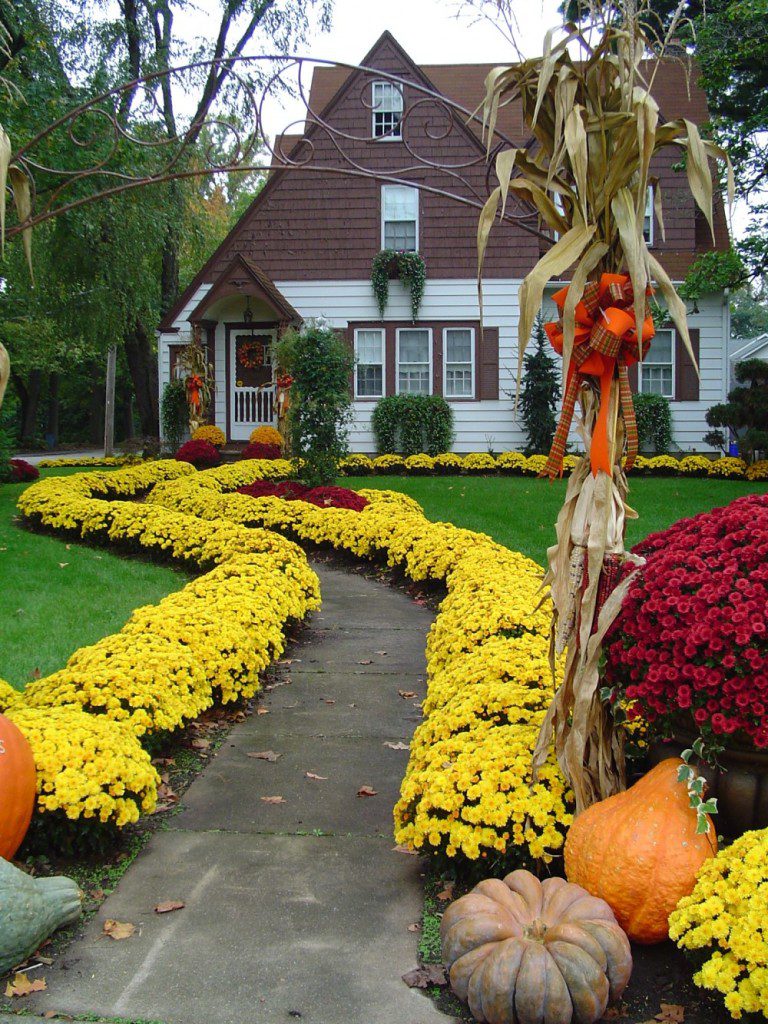
You should complete the following maintenanceMaintenance is the routine care, inspection, and repair of a... More tips in the fall to help prevent water damage:
- Rake leaves: If the leaves that fall on your lawn are not removed, they can become soggy and decayed which can cause moldMold is a type of fungus that grows in damp or humid conditi... More growth and expose the lawn to diseases. You should regularly rake your leaves throughout the fall to prevent these issues.
- Clean gutters: As mentioned above, cleaning out the gutters regularly to remove leaves and other debris during the fall will ensure that water can drain properly from the gutters and downspouts.
- TrimTrim is the decorative or functional molding used to finish ... More trees: Trimming tree branches that are close to your home can not only help prevent damage to your home from fallen branches, but also reduce the amount of leaves that may end up in your gutters.
- Check landscape grading: The landscape around your home should slope away from the foundation to allow water to drain safely away from the home. You can adjust the grading of your landscape by adding more soil around your home to create a downward slope.
- Consider adding outdoor drainage systems: If rainwater continues to pool in areas throughout your yard or landscape despite taking these steps, you should consider installing an outdoor drainage system. These systems ensure thorough drainage of your yard and deposit the water a safe distance from your home.
Sump Pump and Basement Maintenance
The basement is one of the most vulnerable areas of the home to water damage as pooling water and heavy rain can oversaturate the soil around the foundation and cause leaks. The most common ways to protect the basement from floodingFlooding is the overflow or accumulation of water in areas t... More are to install a sump pumpA sump pump is a pump installed in a basement or crawlspace ... More and seal the basement.
Basement sealing, or waterproofingWaterproofing is the application of materials or coatings de... More, involves sealing cracks in the foundation and ensuring proper sealing around basement windows and doors. Foundation cracks should be sealed with hydraulic cement that can effectively keep water out while windows and doors should be sealed using caulk. You can also further waterproof your basement by painting the inside walls with a waterproof coating. Exterior waterproofingWaterproofing is the application of materials or coatings de... More of the foundation walls with a waterproof coating or membrane is another option, though this is also the most expensive option.
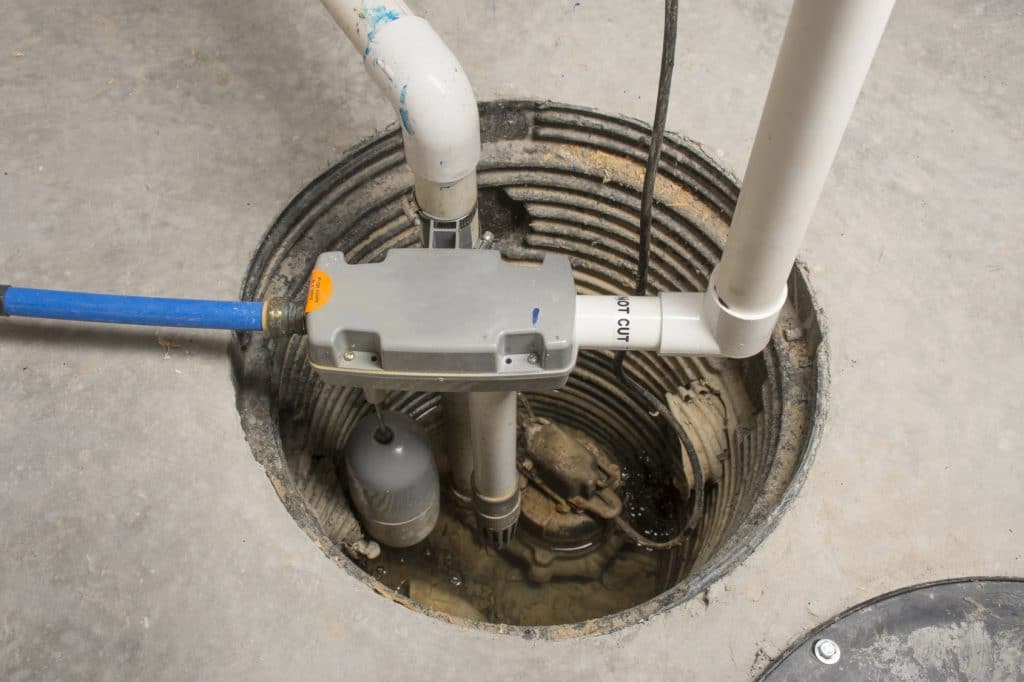
Sump pumps are another highly effective way to protect your basement from excess water and floodingFlooding is the overflow or accumulation of water in areas t... More. They work by collecting excess water from outside the basement into a pump basin that is inside your home. When the water in the basin reaches a certain level, a sensor activates the pump to expel the water out of your home through a drainage pipe. It is important for your sump pumpA sump pump is a pump installed in a basement or crawlspace ... More to be functional year-round to continue to protect your basement from water and flooding.
Before the winter arrives, hire a professional to inspect your sump pumpA sump pump is a pump installed in a basement or crawlspace ... More for damage or other issues. They will check the pit, check valve, backup power source, alarm, basin cover, and discharge location to ensure that everything is functioning properly. You can also handle the following cleaning and maintenanceMaintenance is the routine care, inspection, and repair of a... More tips yourself:
- Clean sump pumpA sump pump is a pump installed in a basement or crawlspace ... More screen and inlet opening: Sediment can accumulate in the inlet opening and on the pump screen which can disrupt the water flow. Make sure to check the pump screen and inlet opening for sediment and clean them if necessary.
- Clean pump and basin: Remove the pump from the basin and clean both according to the instructions in the owner’s manual. This should be done at least once each year.
- Check the discharge location: The water that is expelled by the pump should discharge at least 20 feet from the home. Make sure the water is discharged far enough from the home and that the water is not draining back towards the home.
Winterize Your Home
The cold winter conditions involving freezing temperatures, ice, and snow can be harsh on your home. If you do not properly prepare your home for the upcoming winter, you may experience issues such as frozen pipes or ice dams that can leadLead is a heavy metal that can be toxic to humans, especiall... More to water damage.
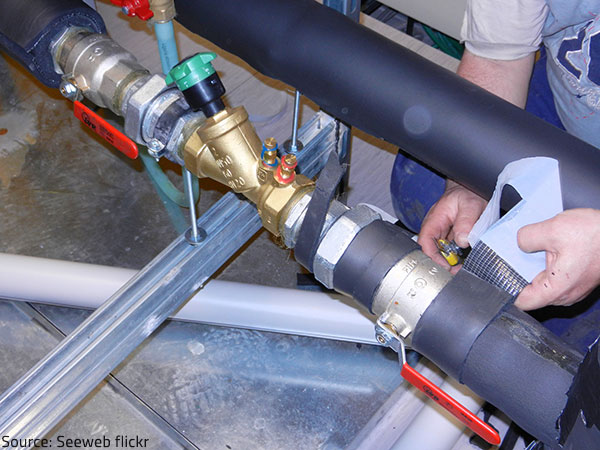
Take adequate measures to keep the pipes warm, regardless of the outside temperatures.
Homeowners must take the time to winterize their homes in the fall to help protect from the harsh winter conditions. The following winterization tips can help reduce the risk of water damage in the winter:
- Insulate pipes: During the winter, freezing temperatures can cause water inside the pipes to freeze and as the ice within the pipe expands, it can cause the pipe to burst. You should insulate pipes in vulnerable areas such as attics, basements, and outside walls using newspapers or pipe insulationInsulation is a material used in buildings to reduce the tra... More wraps that can be found at hardware stores. You can also use heating cables which are more effective for preventing frozen pipes in sub-zero temperatures.
- Inspect the insulationInsulation is a material used in buildings to reduce the tra... More of your home: Check the insulationInsulation is a material used in buildings to reduce the tra... More throughout your home to ensure that it is in good condition. Make sure the old insulationInsulation is a material used in buildings to reduce the tra... More is replaced right away. It is especially important to ensure that your attic is properly insulated to prevent ice dams. Poor attic insulationInsulation is a material used in buildings to reduce the tra... More results in warm spots on the roof where melted snow and ice will pool. This water can leak into the attic through the roof, and it will freeze again when it reaches the colder edge of the roof, forming an ice dam.
- Shut off outdoor faucets: Your home should have a main water valve for outside faucets. Make sure your outdoor faucets are completely drained and then shut off the outdoor water supply for the winter to prevent the outdoor pipes and faucets from freezing and bursting.
- Roof and gutter maintenanceMaintenance is the routine care, inspection, and repair of a... More: The roof and gutter maintenanceMaintenance is the routine care, inspection, and repair of a... More steps mentioned in the previous sections are also an important part of winterizing your home. Maintaining and repairing your roof will prevent water leaks and damage from ice and snow while keeping the gutters clean can help prevent ice dams.
Professional Water Damage Restoration
The fall is a pivotal season for taking the right steps to protect your home from water damage and prepare for the winter. It is important for homeowners to be proactive now before the winter weather arrives and prevents them from handling the necessary maintenanceMaintenance is the routine care, inspection, and repair of a... More. By following the steps outlined above—such as maintaining your gutters, inspecting and repairing your roof, maintaining your landscape, waterproofingWaterproofing is the application of materials or coatings de... More your basement, scheduling a water damage inspectionInspection is the careful examination and assessment of a pr... More, and winterizing your home—you can effectively reduce the risk of water damage and protect your property through the winter.
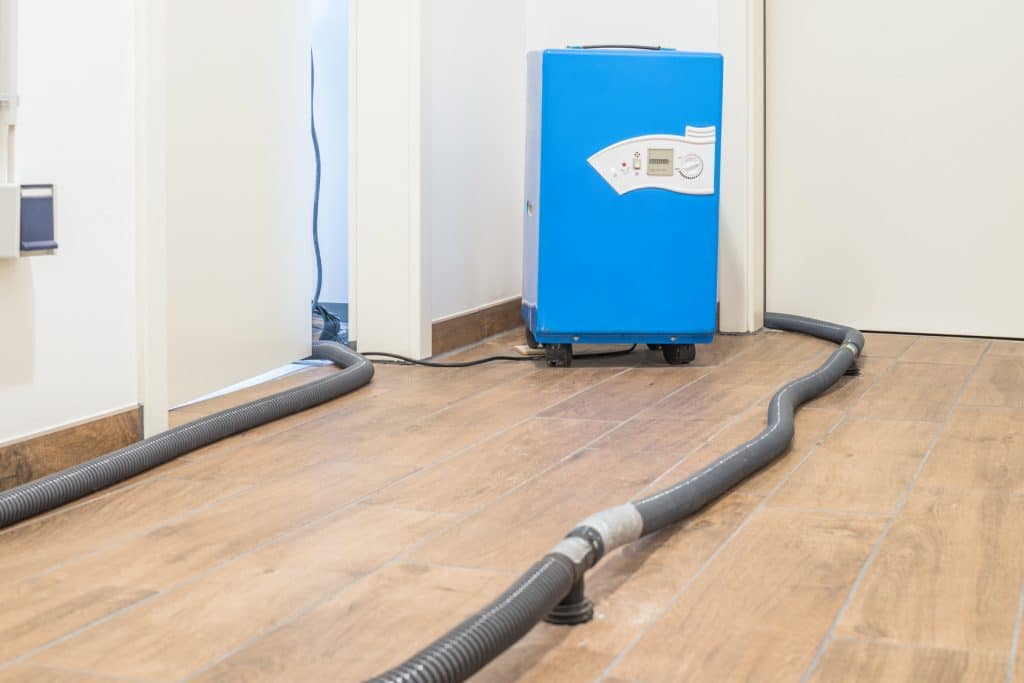
Always make sure to call for professional in the event of water damage to properly dry out all building materials and prevent moldMold is a type of fungus that grows in damp or humid conditi... More growth.
If your home does experience water damage despite your best efforts to prevent it, then you need to call a water damage restoration professional immediately. These professionals can identify and fix the source of the water and stop the water from spreading to limit the damage. They will then use advanced equipment to remove the excess water and moisture and dry and restore the affected areas.
Do not hesitate to call a professional for water damage restoration if your home is affected by water or floodingFlooding is the overflow or accumulation of water in areas t... More during the fall or winter.











